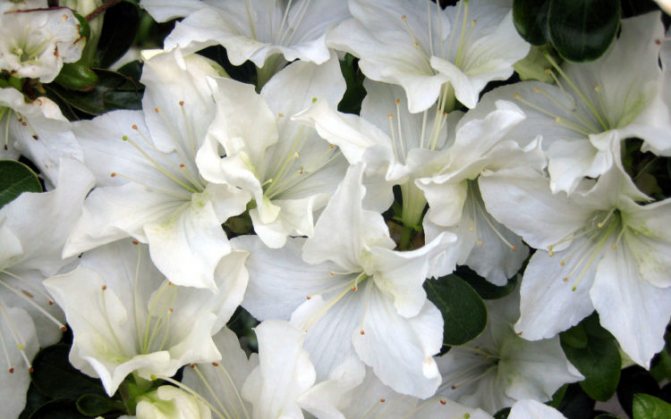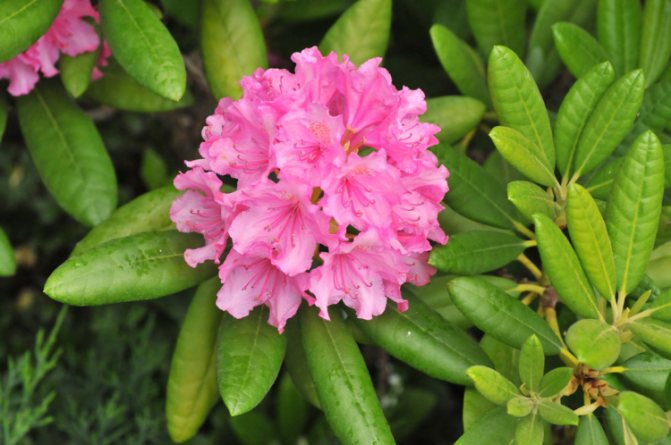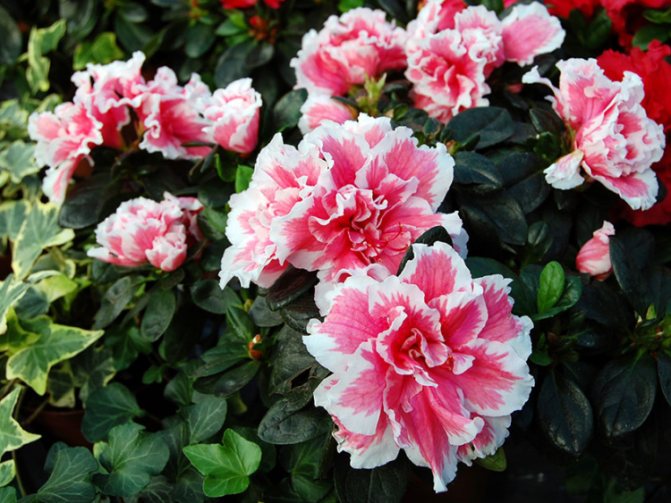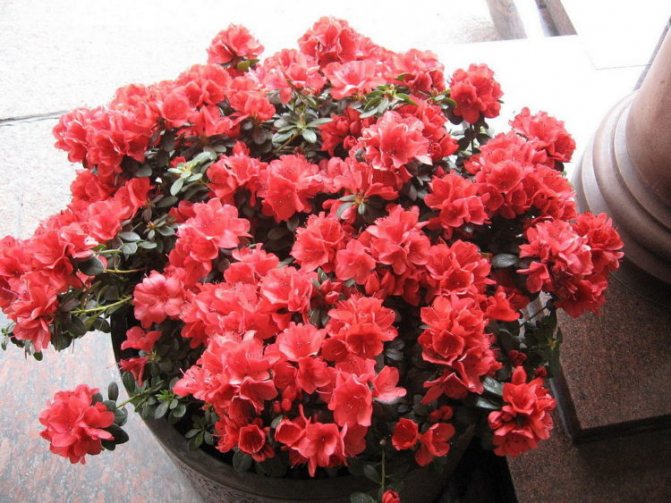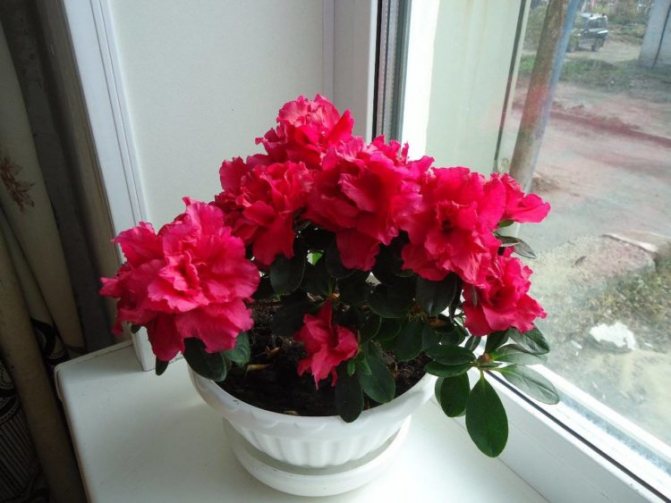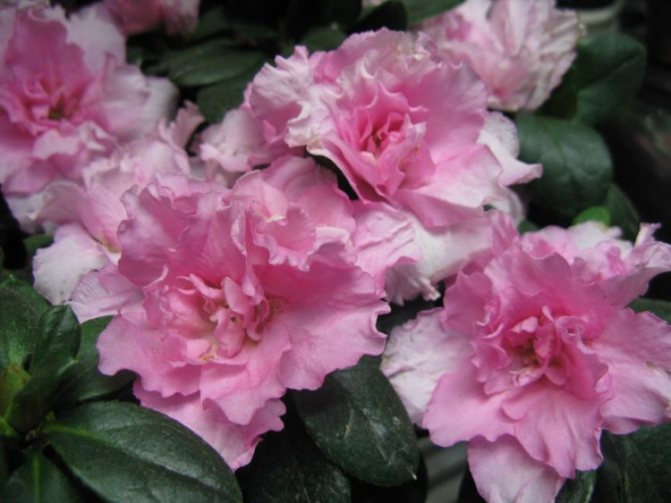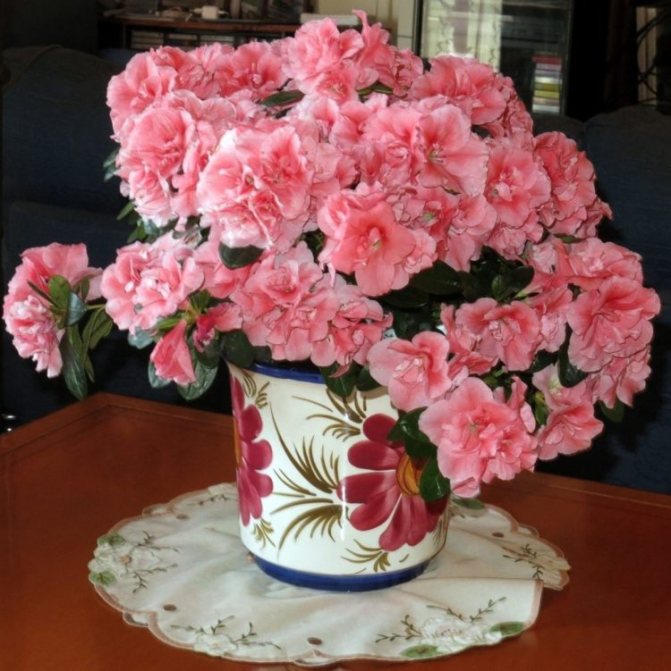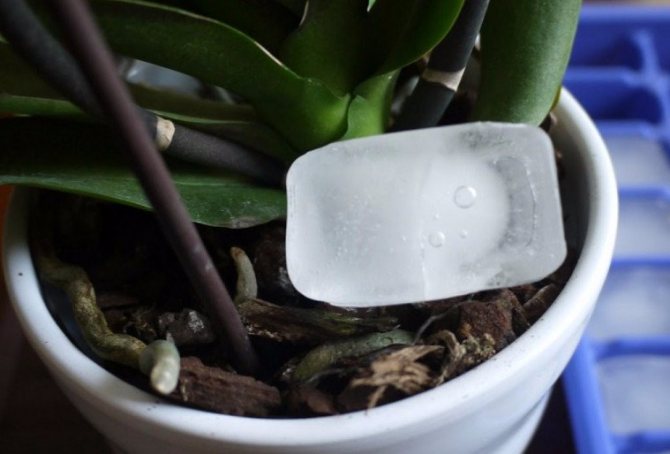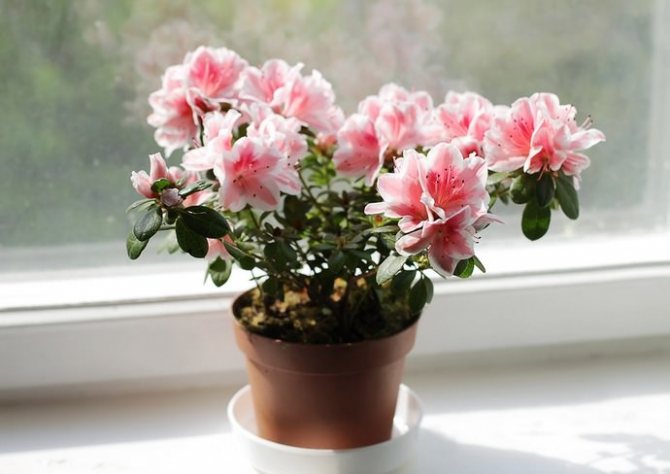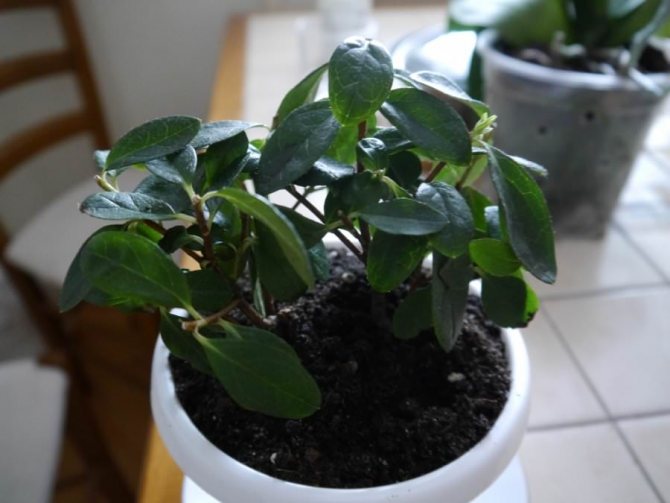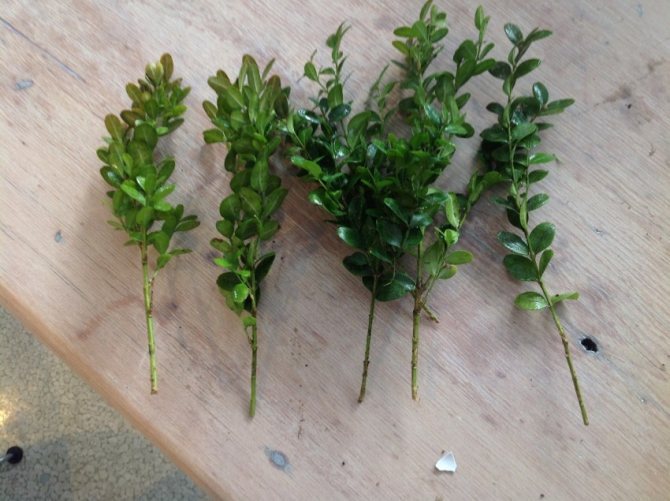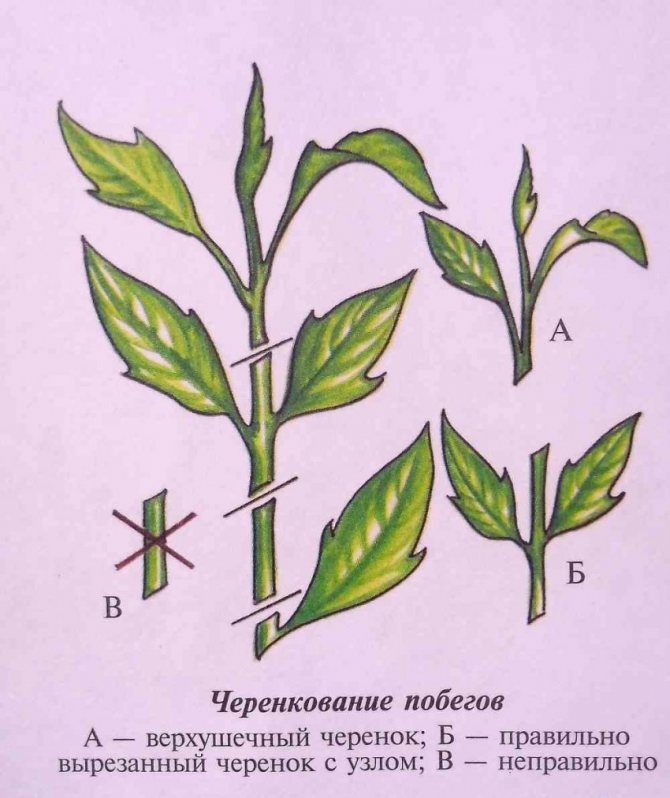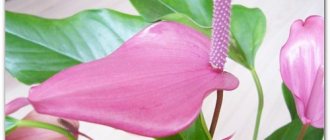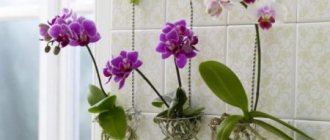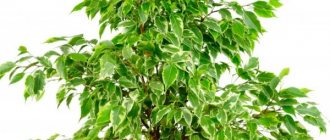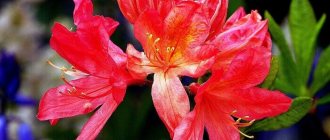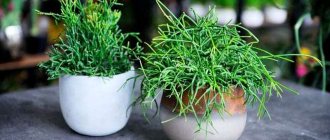Description
Azalea Mix belongs to the genus rhododendron of the Heather family. The plant is short about 60 cm. A shrub with juicy dark green leaves. Leaves are round, pointed, oblong, the leaf surface is dense and smooth. Small flowers resemble a bouquet of roses. Lush bloom with proper care.
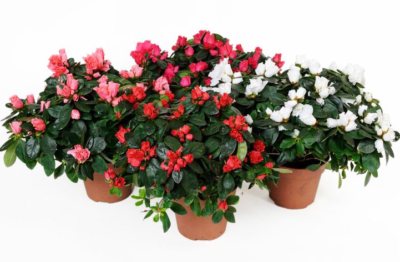
The color of the flower is varied, pink, white. The shape of the crown is domed, consisting of several flowers. The root is small and flat. Azalea is very popular among flower growers and is called indoor rhododendron. In translation, rhododendron means a tree with roses or a rose tree.
History of origin
Azalea Mix is a hybrid rhododendron. The homeland of natural varieties is India, China, Japan. At the beginning of the 20th century, indoor azaleas Mixes were bred by breeders. Wild azalea is found in the Himalayas. It was introduced to Europe at the end of the 18th century. More than 12 varieties of this plant have been created by breeders.
What is the difference from other types of rhododendron?
Unlike natural varieties, Mixes have little or no smell.
The main difference between the azalea flower and other rhododendron species is the number of stamens. The number of stamens coincides with the number of petals and cannot be more than five.
In rhododendrons, there are two per petal, while in other species there are more than 10. And the rest of the azalea from other species of rhododendron is impossible to distinguish.
Difference from other rhododendrons
Cultures belong to the same genus, therefore, they are very similar in appearance. The main differences are not typical for all varieties, exceptions are possible. The decorative forms stand out especially. The azalea indica mix is small in size and multi-colored flowers. The species can be evergreen or deciduous.
Table 1. Main differences
| Parameters | Azalea | Rhododendron |
| Where to grow | Home conditions, open ground | Open ground |
| The size | 30-50 cm | 1-2 m |
| Number of stamens | 5 | 10 and more |
| Leaves | Thinner, softer, more pointed | Depending on the variety, large, hard, rounded |
| The reverse side of the sheet plate | You cannot see the scales with a magnifying glass. | Small-leaved varieties have small, rounded scales. |
| Pubescence | None, possible exception - young shoots | May be on leaves and other parts of the plant |
Subsort with photo
Simsa


Azalea Simsey or Indian azalea is an evergreen plant native to China. Simsey shrubs are branched, elliptical leaves, calyx-shaped flowers, varied colors, flowering from November to May with proper care. The root is flat.
Dwarf
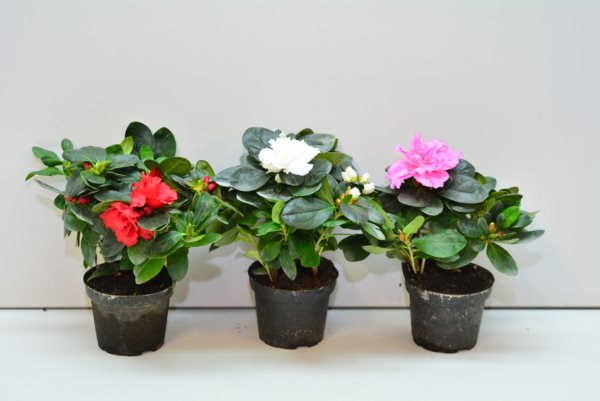

Rhododendron dwarf in height 50 - 60 cm evergreen bush, dense crown. The stems are numerous and curly. The leaves are small, dark green, oblong in shape and grow alternately. The leaf plate is covered with scales or hairs. The flowers are bell-shaped or calyx-shaped and not very large. Inflorescences are collected in 2 - 3 flowers, densely planted. The most varied colors are pink, lemon, dark red. The root is flat.
Bloom
When and how does this process take place?
Indoor azalea blooms during the colder months of the year, usually in winter. The flowering period depends on the comfort conditions. Flowering lasts from two weeks to three months.If your flower drops its petals after 2 weeks and stops blooming, then you need to pay attention to the conditions of its maintenance.
Azalea needs light and moisture in the soil and air. Spray and water with cool water.
The main factor is a cool temperature no higher than 18 degrees. It is better to leave the azalea outside until it gets cold, and then keep it on the balcony until frost.
Care before and after


Much attention is paid to fertilization during flowering:
- It is recommended to use the Zircon preparation once a week. It stimulates flowering and root growth.
- Epin is needed for spraying once every 2 weeks. It can be used only before the buds bloom.
During flowering, bright light is required, but not direct sunlight, but diffused light.
Regular watering is required, the ground should be moist, but not wet. Soft water is used. It must settle, it must be filtered or softened by freezing in the refrigerator. You need to spray carefully, do not get on the flowersotherwise they will rot and fall off.
Azalea blooms once a year, but if you create ideal conditions, then after a few months it will bloom again. After flowering, as soon as the flowers fall off, it is recommended to prune and transplant the plant.
Cropping is required. If you do not do it, the bush will become loose, and the stems will stretch out and hang.
What if it doesn't bloom?
If the azalea does not bloom, then you need to take a closer look at the content of the plant. There are many reasons:
- high temperature, i.e. hot air from batteries;
- direct sunlight;
- lack of lighting, daylight hours - 10-12 hours;
- south side of the room;
- watering with warm water or water with lime;
- drying out of the earth;
- untimely pruning;
- drafts
It is important to correctly pinch and trim the crop, which will give an abundant and long-lasting flowering.
Transfer
The question of transplanting arises immediately after the first flowering of the acquired azalea. This should be done in the spring as follows:
- Required determine the state of the root system during thorough rinsing.
- The transplant should be carried out by the transshipment method, keeping an earthen lump on the roots. They cannot be damaged.
- Choose a flat, wide pot.
- Cut off all dry flowers, shoots, branches before planting.
- Find acidic soil. It is better to buy ready-made mixture "Azalea".
- In a pot arrange good drainage.
- Do not cover the root collar of the plant.
Young seedlings are transferred to a different pot every year. Mature plants are transplanted every five years.
With proper care, azaleas bloom magnificently all the time, which is why they are respected by flower growers.
Care after purchase: step by step instructions
Seat selection
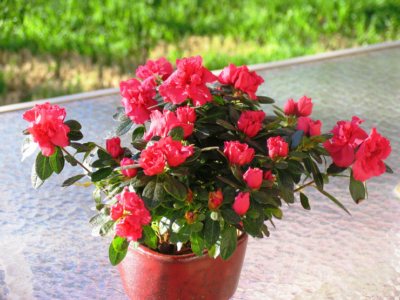

Rhododendrons need good lighting. The most suitable place is partial shade, where direct sunlight will not fall on the bush, and it will not fade. But it is not advisable to plant in a deep shade, otherwise you will wait a long time for flowering.
If the plant is indoor, then the best place is a windowsill that faces west, east or north. In winter, it is advisable to use additional illumination - fluorescent lamps.
What should be the soil?
Acidic soils rich in humus are suitable for rhododendron.
You can prepare the mixture yourself, for this you need:
- Peat.
- Sand.
- Coniferous land.
The ratio is one to one and then everything is mixed.
Heather soil is also suitable. If there is no way to find her, then can be replaced with potting mix:
- Peat land (1 part).
- Coniferous (2 parts).
- River sand.
It is desirable that the soil is loose and not caked and can easily pass water. Therefore, perlite is also added. If you cannot make the soil yourself, then the best option is to buy at a flower shop, where all the necessary substances and trace elements are added to the composition.
Landing, including in the stem
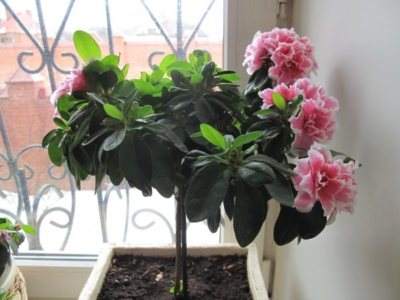

- Azalea Mix is formed on a stem, for this a strong stalk is selected.
- The side branches are trimmed, and the cuts are processed with garden varnish.
- When caring for the stem, the pot must be periodically rotated 180 degrees.
- During growth, you should monitor the branches - the supports of the crown of the tree, so that they are at the same level.
- The transshipment method is used for landing. To do this, you need to soak the substrate of the planting flower. At the bottom of the pot, it is necessary to lay a drainage layer of 5 cm. The seedling, together with an earthen lump, is carefully lowered and covered with a ready-made substrate. For planting azaleas, a pot with a height of 10-15 cm is suitable.
A clay container is required to circulate air in the soil.
Temperature
Another important factor in caring for a blooming azalea is temperature. A suitable temperature for azaleas is 10-15 degrees, a cool room is required.
If it is not possible to create such a temperature at home, then it is better to keep the indoor flower in a closed loggia, but so that the temperature regime does not drop to 5 degrees Celsius. If left at home, then the maximum temperature should not be higher than 18 degrees. You can also spray the bush with distilled water several times a day.
Watering
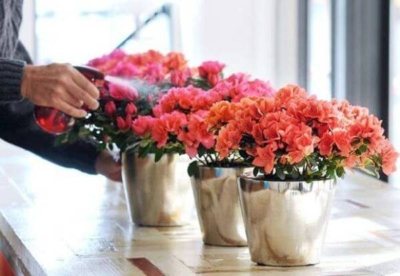

If it's hot and sunny, then watering the azalea is required a couple of times a day. It is advisable to spray several times a day, but use only distilled water. It is also necessary to periodically watered with citric acid solution.
Stagnation of moisture in the pot is not desirable, as this can lead to rotting of the crop.
Top dressing
Top dressing plays an important role, especially you need to feed the plant during the flowering period. You can use mineral supplements. Superphosphate can be used, especially when the flower is filling the bud. You can use Zircon, its advantage is that it is based on plant raw materials. For 20 liters of water, only 1-2 drops of the product are required.
Pruning
Pruning is of great importance. Cut off only after flowering. Form the crown by pinching the shoots. If this method is not used, then the plant grows and there will be much less flower buds.
Transfer
Frequent replanting is not desirable. The transplant is done no more than 1 time per year, if the age of the bush has not reached 3 years. A transplant is necessary when:
- decay of the substrate;
- flower diseases that have affected the roots;
- and with strong root growth.
Never transplant the azalea during budding and flowering. She will immediately shed the buds and may even die.
Azalea is strongly discouraged from replanting in winter.
Reproduction of azalea indica
Azalea propagation occurs in four ways: seed, cuttings, dividing the bush and grafting. The most common method is jigging cuttings. Although this process cannot be called simple, since a greenhouse is required for its successful implementation.
Cuttings 8-10 cm long are cut in spring from shoots that were pinned in July last year. Harvested only from healthy plants, no more than once a year. Cuttings are cut with a sharp knife above the kidney. The lower leaves are removed. The stalk is placed in a container with moist peat, deepening by 5 cm. The container is covered with a jar, polyethylene, or placed in a greenhouse, where a high humidity level (80%), a stable temperature of +25 ºС and diffused light are maintained. The cuttings are regularly sprayed and given access to oxygen. Rooting should be expected in three to six months. After the roots appear, young plants are transplanted to a permanent place.
Reproduction by dividing the bush is only suitable for three to four year old plants.
How to propagate?


There are several ways to breed, such as:
- using seeds;
- cuttings;
- vaccination;
- dividing the bushes (as a rule, an old plant with a large number of shoots is used).
Breeding azaleas with seeds is not effective, this method is rarely used. A more effective method is to propagate azaleas using cuttings. The process consists of several stages:
- Choosing a cutting. The stalk should be 5-7 months old. Remove the buds, leave 3-4 leaves at the top. The length of the handle is 6-7 cm.
- Cutting preparation. Treated with a non-concentrated solution of potassium permanganate.
- Preparing the landing site. Pebbles are laid out on the bottom of the container, and soil on top. The soil is well watered before planting.
- Landing in the ground. Planted in 3-4 pieces in a pot, planted in abundantly watered soil at a distance of 4-5 cm from each other. Planting depth 2-3 cm.
- Creation of conditions for growth. Cover the cuttings with a film, moisten the soil from time to time and air the cuttings daily. Such breeding is laborious, but gives significant results.
Why are there no flowers
The plant must go through all stages of growth under the correct conditions of existence determined by nature. Flowers do not appear when lighting conditions, humidity, watering, improperly compiled soil, and drafts are violated.


Azalea withered and lost its foliage from lack of lighting
Close observation of the quality of the leaves will tell you the reason for reluctance to form buds, flowers.
Recommendations for growing azaleas at home cannot be ignored. Plant mistakes are not forgiven.
Diseases and pests
By its appearance, you can determine the disease of azalea, such signs as:
- Curling the tips.
- The appearance of spots on the leaves.
- Yellowing or decay of the root system.
- Leaves fall off.
Leaves fall off - the reason:
- The plant is in the wind.
- Preparing for winter in deciduous varieties.
- Low room temperature.
- Aphid.
- Spider mite.
If you have an azalea in your house, then immediately there are many questions about caring for this plant. How to grow an Indica variety and make a bonsai from an ordinary one - read on our Internet portal.
Prevention of various problems
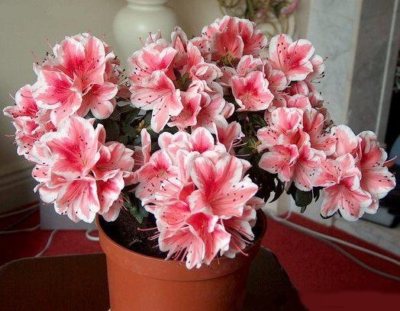

Basic recommendations for flower care:
- good lighting, but no direct sunlight;
- top dressing, especially during flowering;
- do not put the plant in drafts;
- pour with distilled water;
- spray often;
- maintain a certain temperature.
Azalea Mix is a very beautiful flower that requires some attention. For the development of this species to proceed correctly, certain conditions are necessary. The reason for the lack of flowering can be:
- improper soil composition;
- fungal diseases;
- ticks;
- thrips and other pests.
If you find an error, please select a piece of text and press Ctrl + Enter.
The consequences of improper care
Improper plant care is fraught with negative consequences. Most often, it consists of the following:
- Improper watering. If the basic rules for watering are not followed, problems such as:
- fungal diseases (over-watering);
- root rot (excessive watering);
- spider mite (insufficient watering and dry air).
- Root damage (mechanical and chemical).
- Unbalanced feeding. They are expressed in a deficiency or excess of nutrients.
- Soil salinization (watering with untreated tap water containing an increased amount of salts).
- Violation of the temperature cycle. Leads to little or no flowering.

